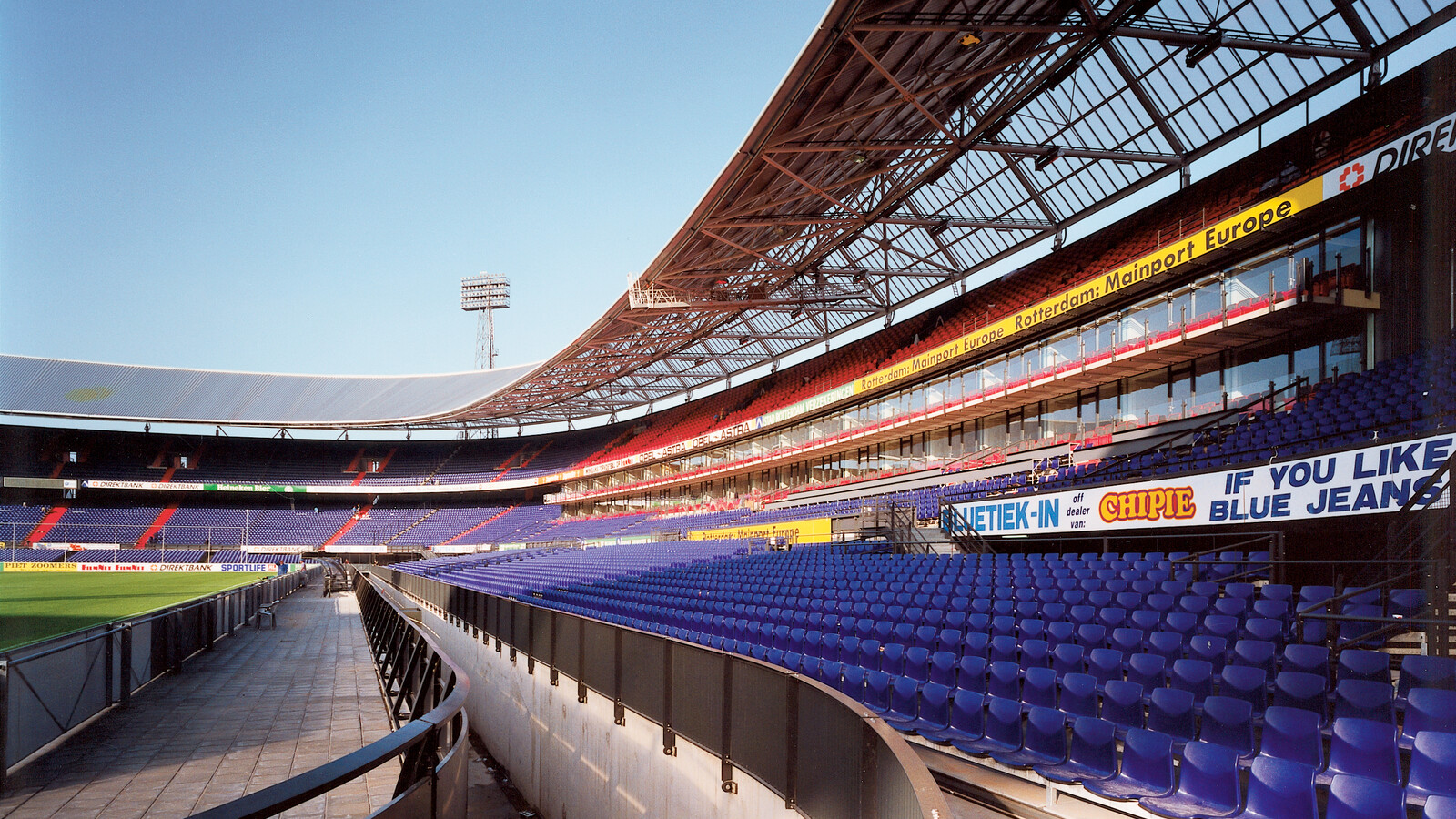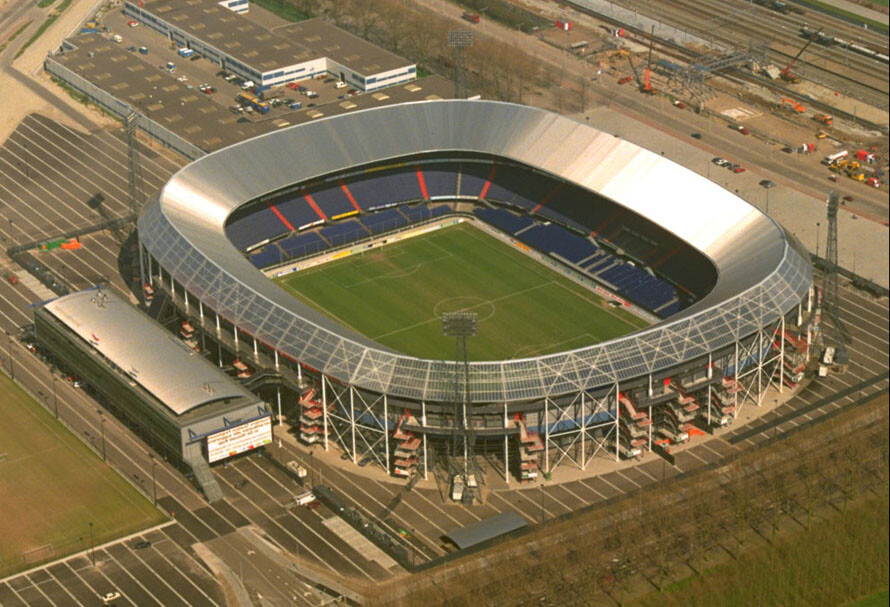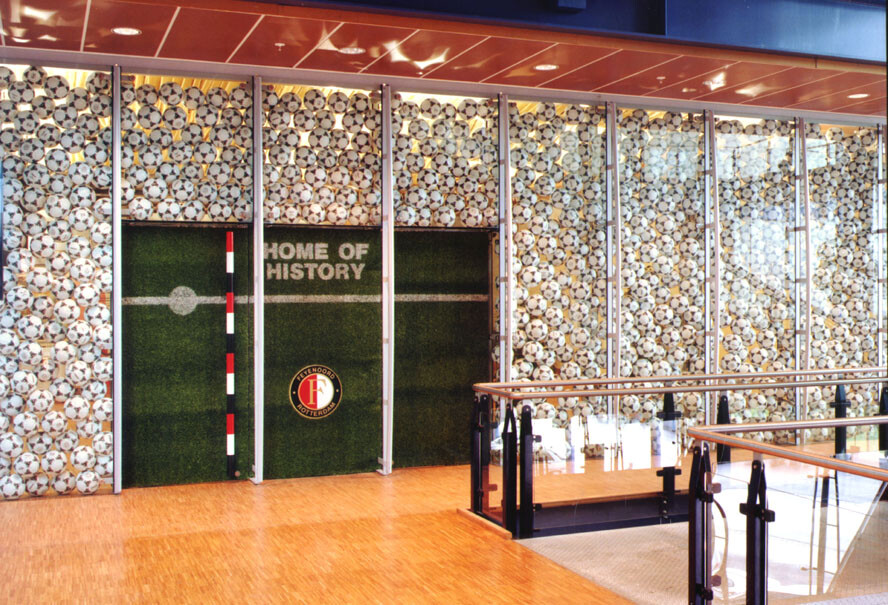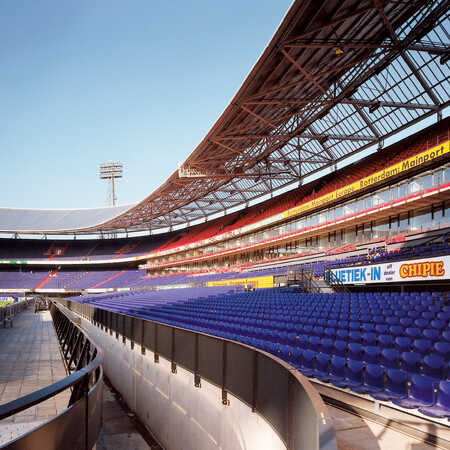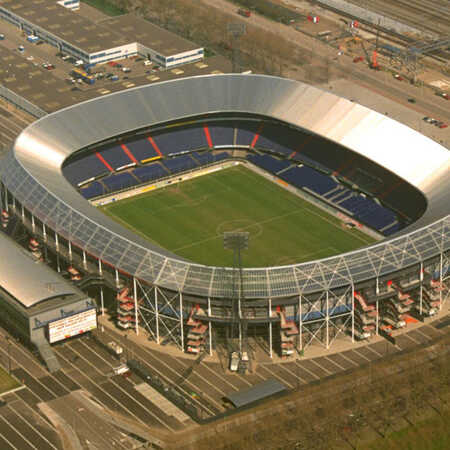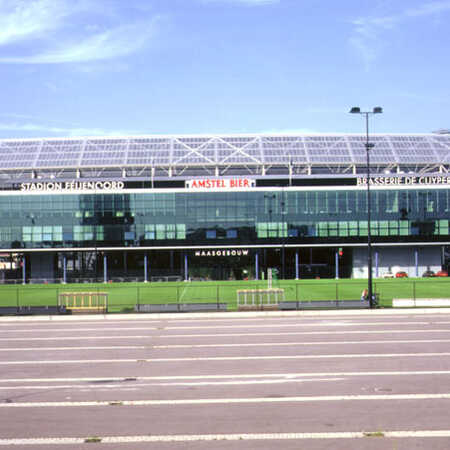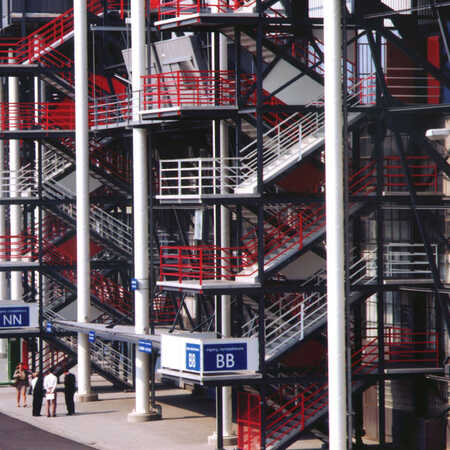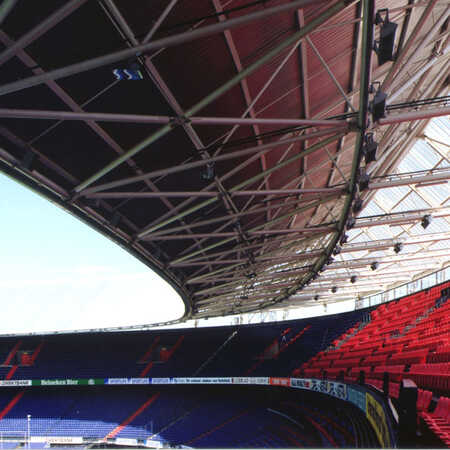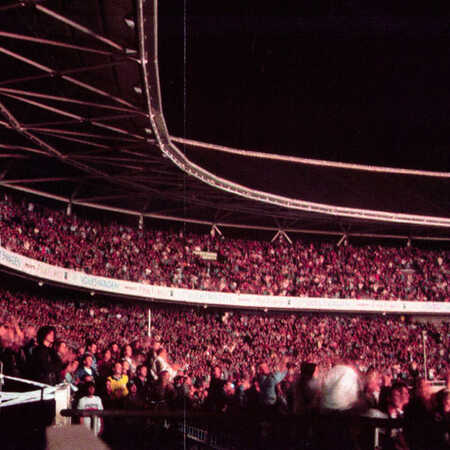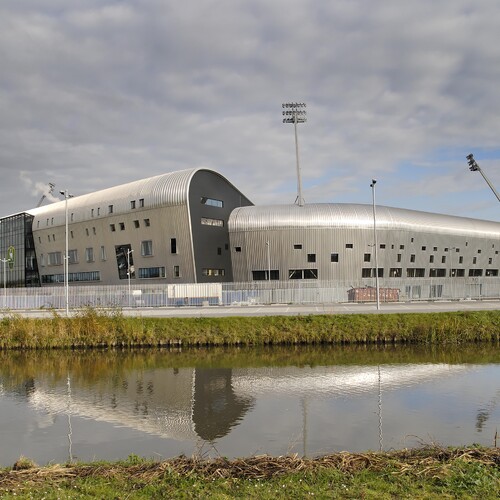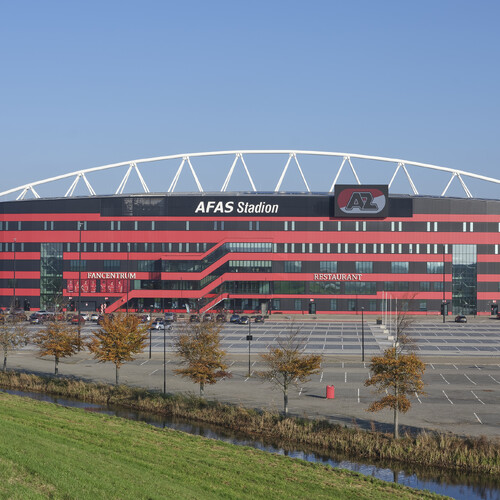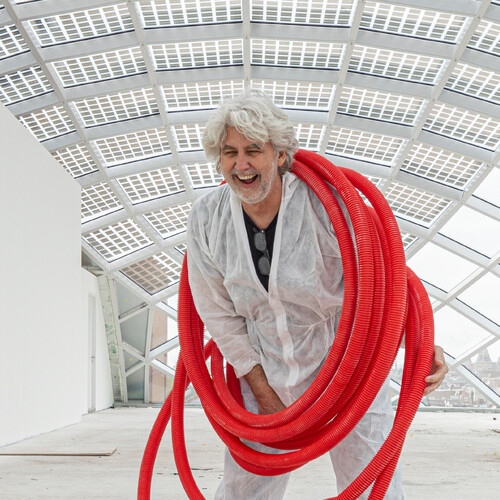The additions all needed to be in keeping with the character of the old building, which is typical of the 1930s, when steel was expensive and labour cheap. It has many light, branching steel structures that give the large stadium an airy and spacious character, with outer wings of slim steel.
This is demonstrated by the new structure on the east side, where stands were replaced by a new grandstand and luxury seating in skyboxes, and by the new building beyond. The same light steel construction, fitted into but built separately from the existing building, match the style of the old Kuip without compromising it.
